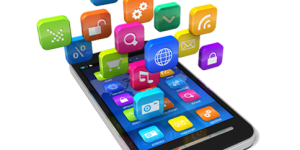By ICTpost Media Action Bureau
Mobile phone and web applications that enable people to talk to local policymakers and allow children to learn through games have won a competition for technological innovations that address sanitation problems in developing countries. One in three people today have no toilet and the global economic losses due to lack of access to sanitation amount to US$260 billion a year, according to the World Bank. Here are some good examples of Mobile and web apps to tackle sanitation challenges:
LooRewards
LooRewards uses SMS-based incentive program to give redeemable reward points to urban poor for adopting healthy & hygienic practices like using a toilet, buying clean water etc. Families receive reward points and updates directly on their phones making the benefits of using the services immediate. It also creates funds for provision & maintenance of these basic services (toilet, clean water etc) in urban slums.
User membership and Usage is managed using the LooRewards app that is installed on toilet operator’s tablet. Toilet users become members of LooRewards platform at their nearest community toilet. Currently LooRewards is pre-installed in Android devices that are provided to Toilet Operators in our Pilot test Sites. LooRewards partners with service providers for providing/cleaning Toilets, Clean Water etc in a community. The company is also developing methodologies for capturing this data through sensors. Families redeem their LooRewards points for goods that they value, such as clean water, cell phone minutes etc. It also provides various incentives to urban poor for adopting hygienic practices.
LooRewards solves technological challenges: Data Collection at individual or family level: This includes socio-demographic data, toilet usage data, hygiene data, health data. Data Analytics: LooRewards delivers specific, personalized insights and content to each customer, converting otherwise inscrutable data into actionable insights. Data Visualization: The visualizations enable users to get insight into consequences of their actions.
Peer Water Exchange – SMS Reporting, Peer Water Exchange
This is a SMS based reporting service to receive field reports on water and sanitation projects. PWX is designed to tackle the challenge of managing toilet delivery and operation to 600 million Indians and verifying operation and impact. At present, PWX is working in six states of India.
Peer Water Exchange’s (PWX) SMS Reporting is designed for monitoring and reporting on the implementation and post-implementation of water solutions by the people affected. Field personnel living and working in remote areas can send in SMS notes which are attached to the project reports transparently on the website. This simple mobile solution can bring critical data to the global community so everyone can learn how projects succeed or overcome challenges.
Field reports help managers and funders monitor, track and address issues applicable. These notes allow organizations to learn and share critical lessons since they replace bi-lateral communications with broadly visible storage and distribution channels. The natural extension of the SMS reporting process is to eventually equip beneficiaries to report on projects themselves.
The technology behind PWX SMS Reporting: ?Standard SMS technology at client side. SMS gateway: TxtWeb (by Intuit) and Android gateway. Server: PWX is written in Ruby-on-Rails and uses numerous plugins such as Google maps. Pricing is free for non-profit members serving their communities. ?If the projects generate revenue or the operator is not non-profit we charge a monthly fee per project. PWX projects provide safe drinking water and sanitation facilities. PWX manages projects globally and at present is working in six states of India.
Project Noah, Networked Organisms
Project Noah harnesses popular mobile and web technology, social media, and gamification to create engaging community around nature exploration and documentation. Project Noah was developed to mobilize a new generation of nature explorers. Backed by National Geographic, the project currently has 200,000 members from all over the world who have collectively shared more than 1 Terabyte worth of wildlife observations. It’s a social network with a social purpose.?
Users can snap and share photos of the wildlife they encounter. When they need help with species identification, the community offers their suggestions. Secondly, users can participate in missions to help collect important environmental data for scientists. The user can access a location based field guide to view and learn about all the wildlife that has been documented nearby. This feature translates to a unique app experience wherever you launch the app. ?Project Noah’s goal is to boost environmental interest and overall knowledge.
The Project Noah application modes: Sharing observations (Spottings): Users can quickly snap a photo of a plant or animal and add some notes about what they have seen. If they don’t know the species, they can request help from the community. When the photo is submitted, it collects the notes along with the location associated with the submitted photos.
Location Based Field Guide: Based on the user’s current location, it will show all the wildlife (and associated notes) that has been observed by our community nearby. In this fashion, the user can learn about the nature nearby. This is mobile learning as the experience will change depending on where you are and where you decided to launch the app. editor@ictpost.com








